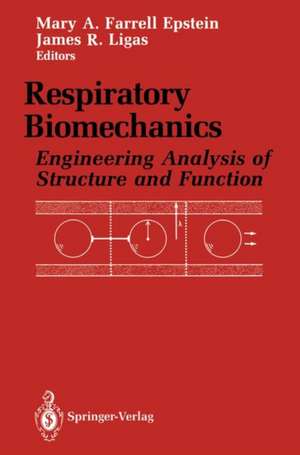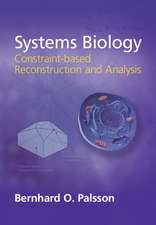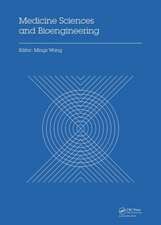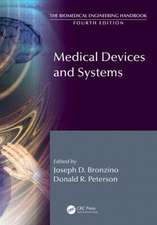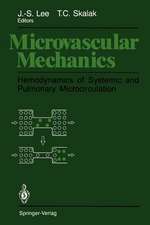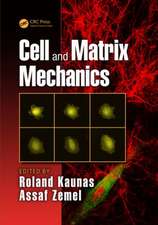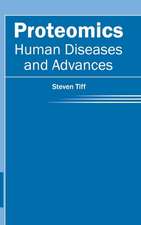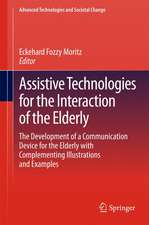Respiratory Biomechanics: Engineering Analysis of Structure and Function
Editat de Mary A. F. Epstein, James R. Ligasen Limba Engleză Paperback – 26 sep 2011
Preț: 711.52 lei
Preț vechi: 748.97 lei
-5% Nou
Puncte Express: 1067
Preț estimativ în valută:
136.15€ • 142.53$ • 112.65£
136.15€ • 142.53$ • 112.65£
Carte tipărită la comandă
Livrare economică 07-21 aprilie
Preluare comenzi: 021 569.72.76
Specificații
ISBN-13: 9781461280170
ISBN-10: 1461280176
Pagini: 220
Ilustrații: XVI, 201 p.
Dimensiuni: 155 x 235 x 12 mm
Greutate: 0.31 kg
Ediția:Softcover reprint of the original 1st ed. 1990
Editura: Springer
Colecția Springer
Locul publicării:New York, NY, United States
ISBN-10: 1461280176
Pagini: 220
Ilustrații: XVI, 201 p.
Dimensiuni: 155 x 235 x 12 mm
Greutate: 0.31 kg
Ediția:Softcover reprint of the original 1st ed. 1990
Editura: Springer
Colecția Springer
Locul publicării:New York, NY, United States
Public țintă
ResearchDescriere
This proceedings volume brings together the invited papers from the Respiratory Biomechanics Symposium of the First World Congress of Biomechanics held in La Jolla, California from August 3D-September 4, 1990. The respiratory system offers many opportunities to apply the different branches of traditional mechanics. Tissue defonnations and stresses during lung expansion can be analyzed using the principles of solid mechanics. Fluid mechanical problems in the lung are unique. There is the matched distribution of two fluids, gas and blood, in two beautifully intertwined, branched conduit systems. The reversing flow of the gas phase presents different problems than the pulsatile flow of the non-Newtonian fluid that is the blood. On the smaller scale, there is the flux of fluids and solutes across the capillary membrane. Finally, there is the problem of coupling fluid and solid mechanics to understand the overall behavior of the respiratory system. In this symposium, we have chosen to address the basic processes that contribute to the gas and fluid exchange functions of the lung. Section 1, Lung Tissue Mechanics, provides an historical background and, then, presents more recent work on the structure of the lung parenchyma, the mechanics of the tissue, and the effects of the bounding membrane, the visceral pleura.
Cuprins
1. Lung Tissue Mechanics.- Lung Tissue Mechanics: Historical Overview.- Architecture of Lung Parenchyma.- Volume-Pressure Hysteresis of the Lungs.- Lung Tissue Mechanics.- Pleural Mechanics.- 2. Respiratory Fluid Mechanics and Transport.- Impedance of Laminar Oscillatory Flow Superimposed on a Continuous Turbulent Flow: Application to Respiratory Impedance Measurement.- Current Issues in Understanding Acoustic Impedence of the Respiratory System.- Effects of Curvature, Taper and Flexibility on Dispersion in Oscillatory Pipe Flow.- Interactions Between Lung Mechanics and Gas Transport.- Nonclassical Features of Gas Transport and Exchange at the Alveolar Level.- Flow Dynamics of the Nasal Passage.- 3. Pulmonary Circulation.- Elasticity of Pulmonary Blood Vessels in Human Lungs.- Distensibility of the Pulmonary Capillaries.- Recruitment of Pulmonary Capillaries.- Pulsatile Pulmonary Capillary Pressure Measured with the Arterial Occlusion Technique.- Sites of Pulmonary Vasoconstriction: Indirect and Direct Measurements.- 4. The Use of Mathematics and Advanced Technology to Measure and Evaluate Lung Fluid Exchange and Solute Balance.- An Error Analysis of Pulmonary Vascular Permeability Measurements Made with Positron Emission Tomography.- Evaluation of Lung Vascular Permeability by External Scanning of Gamma Emitter Activity.- Use of Mathematics in Assessing Solute Exchange Across the Lung Epithelium.- On Line Colormetric Determinations of Transvascular Fluid and Protein Transport in Isolated Lobes.- Fractal Analysis of Lung Fluid Flow.- The Roles of Small Molecules as Probes of Endothelial Barrier Function in the Lung: Novel Measurement Methods and Molecular Probes.- 5. Integrating Mechanics and Transport in Assessing Respiratory Function.- Airway Heat and Water Exchange.- Quantitation of the Regional Distribution of Pulmonary Blood Flow by Fractal Analysis.- Elucidation of Principles of Gas Exchange by Means of Soluble Tracer Species.
